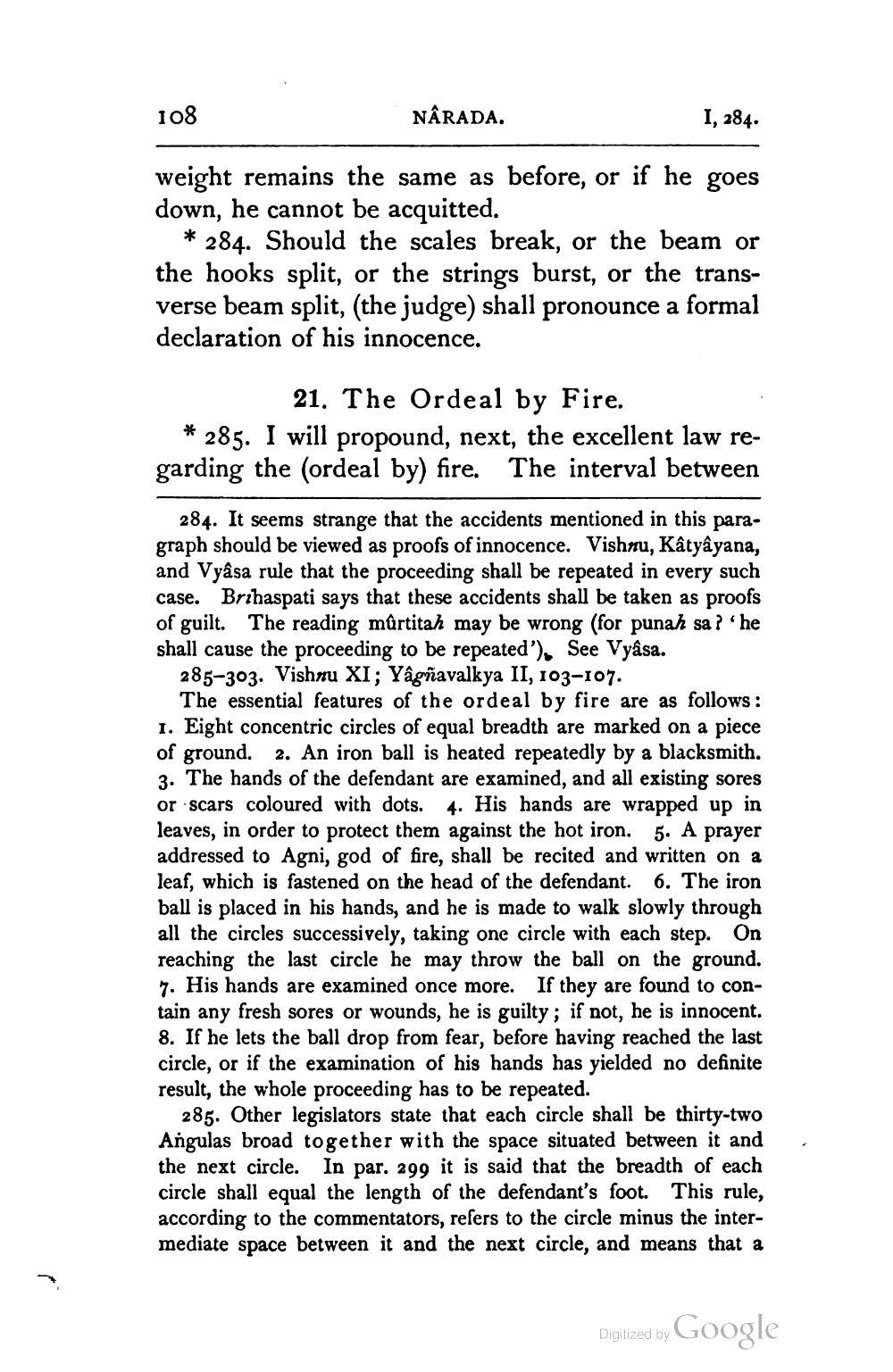________________
108
NARADA.
1, 284.
weight remains the same as before, or if he goes down, he cannot be acquitted.
* 284. Should the scales break, or the beam or the hooks split, or the strings burst, or the transverse beam split, (the judge) shall pronounce a formal declaration of his innocence.
21. The Ordeal by Fire. * 285. I will propound, next, the excellent law regarding the (ordeal by) fire. The interval between
284. It seems strange that the accidents mentioned in this paragraph should be viewed as proofs of innocence. Vishnu, Kâtyâyana, and Vyâsa rule that the proceeding shall be repeated in every such case. Brihaspati says that these accidents shall be taken as proofs of guilt. The reading mûrtitah may be wrong (for punah sa ? 'he shall cause the proceeding to be repeated'). See Vyâsa.
285–303. Vishnu XI; Yâgñavalkya II, 103-107.
The essential features of the ordeal by fire are as follows: 1. Eight concentric circles of equal breadth are marked on a piece of ground. 2. An iron ball is heated repeatedly by a blacksmith. 3. The hands of the defendant are examined, and all existing sores or scars coloured with dots. 4. His hands are wrapped up in leaves, in order to protect them against the hot iron. 5. A prayer addressed to Agni, god of fire, shall be recited and written on a leaf, which is fastened on the head of the defendant. 6. The iron ball is placed in his hands, and he is made to walk slowly through all the circles successively, taking one circle with each step. On reaching the last circle he may throw the ball on the ground. 7. His hands are examined once more. If they are found to contain any fresh sores or wounds, he is guilty; if not, he is innocent. 8. If he lets the ball drop from fear, before having reached the last circle, or if the examination of his hands has yielded no definite result, the whole proceeding has to be repeated.
285. Other legislators state that each circle shall be thirty-two Angulas broad together with the space situated between it and the next circle. In par. 299 it is said that the breadth of each circle shall equal the length of the defendant's foot. This rule, according to the commentators, refers to the circle minus the intermediate space between it and the next circle, and means that a
Digitized by Google




